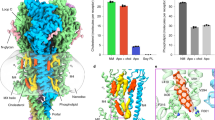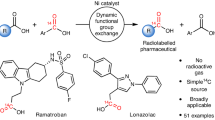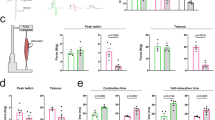Abstract
A HUNDRED years have passed since Claude Bernard's publication of his investigations on the action of curarine in “Lecons sur les effets des substances toxiques et médicamenteuses”1. He was able by indirect experiments to localize the curare-block in the end-plates of skeletal muscle. Some time ago when we investigated the metabolism of carbon-14 – curarine I in the cat2, we tried to obtain auto-radiographs of muscle, intending to show the fixation of this alkaloid directly at the neuro-muscular junctions.
This is a preview of subscription content, access via your institution
Access options
Subscribe to this journal
Receive 51 print issues and online access
$199.00 per year
only $3.90 per issue
Buy this article
- Purchase on SpringerLink
- Instant access to full article PDF
Prices may be subject to local taxes which are calculated during checkout
Similar content being viewed by others
References
Bernard, C., 238–353 (Paris, 1857).
Waser, P., Schmid, H., and Schmid, K., Archives Internat. de Pharmacodynamie et de Thérapie, 96, 386 (1954).
Koelle, G. B., and Friedenwald, J. S., Proc. Soc. Exp. Biol. and Med., 70, 617 (1949).
Couteaux, R., Thèse de l'université de Paris: “Contribution à l'étude de la synapse myoneurale” (Montréal, 1947).
Author information
Authors and Affiliations
Rights and permissions
About this article
Cite this article
WASER, P., LÜTHI, U. Autoradiography of End-plates with Carbon-14 – Calabash – Curarine I and Carbon-14 – Decamethonium. Nature 178, 981 (1956). https://doi.org/10.1038/178981a0
Issue date:
DOI: https://doi.org/10.1038/178981a0



